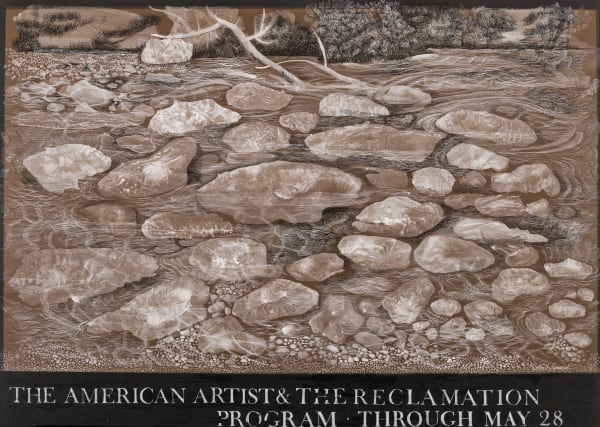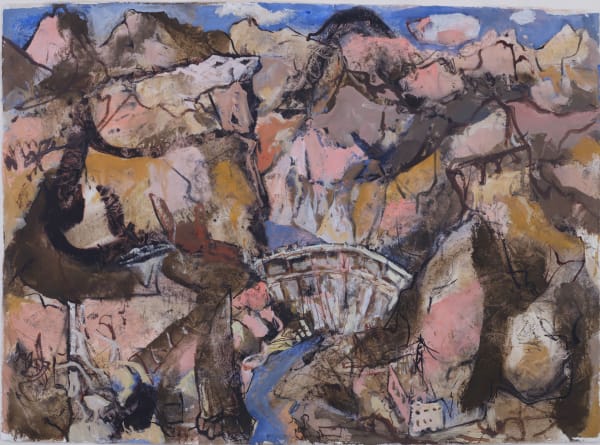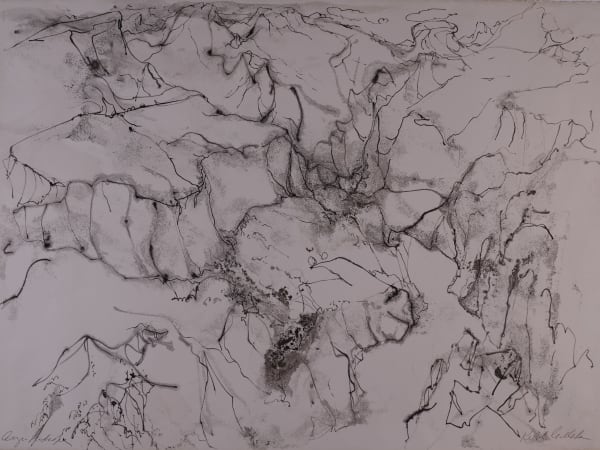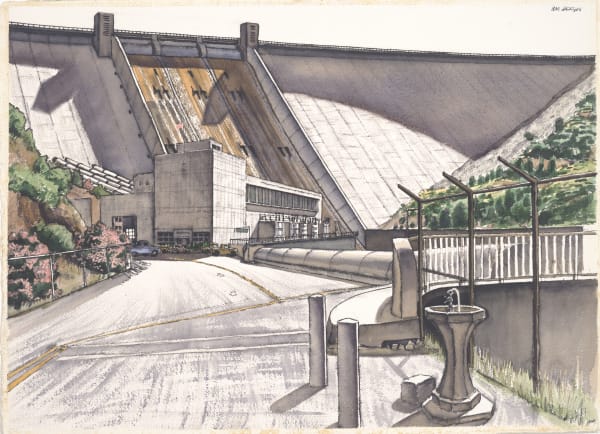-
 Mitchell Jamieson, Wilderness Stream, 1969
Mitchell Jamieson, Wilderness Stream, 1969 -
 Kenneth Callahan, Hoover Dam, 1970
Kenneth Callahan, Hoover Dam, 1970 -
 Richard Diebenkorn, Lower Colorado #2, 1970
Richard Diebenkorn, Lower Colorado #2, 1970 -
 Kenneth Callahan, Arizona Landscape #4, 1970
Kenneth Callahan, Arizona Landscape #4, 1970 -
 Kenneth Callahan, Arizona Landscape, 1970
Kenneth Callahan, Arizona Landscape, 1970 -
 Richard Diebenkorn, Lower Colorado #8, 1970
Richard Diebenkorn, Lower Colorado #8, 1970 -
 Kenneth Callahan, Boulder Canyon, 1970
Kenneth Callahan, Boulder Canyon, 1970 -
 Lamar Dodd, Grand Coulee Spillway, 1970
Lamar Dodd, Grand Coulee Spillway, 1970 -
 Dean Fausett, Peaceful Morning Near Camp, 1969
Dean Fausett, Peaceful Morning Near Camp, 1969 -
 Dong Kingman, Flaming Gorge Overlook, 1971
Dong Kingman, Flaming Gorge Overlook, 1971 -
 Roland Petersen, Shasta Dam - California, 1970
Roland Petersen, Shasta Dam - California, 1970 -
 Fritz Scholder, Indian Ruin - Lake Powell, 1971
Fritz Scholder, Indian Ruin - Lake Powell, 1971 -
 Michael Frary, Hungry Horse - The Dam, 1970
Michael Frary, Hungry Horse - The Dam, 1970 -
 Michael Frary, Hungry Horse - The Reservoir, 1970
Michael Frary, Hungry Horse - The Reservoir, 1970 -
 Michael Frary, Hungry Horse -The Shoreline, 1970
Michael Frary, Hungry Horse -The Shoreline, 1970 -
 Roland Petersen, Whiskeytown Patterns, 1970
Roland Petersen, Whiskeytown Patterns, 1970 -
 Billy Morrow Jackson, Shasta Dam, 1969
Billy Morrow Jackson, Shasta Dam, 1969 -
 Michael Frary, Yellowtail Switchyard, 1970
Michael Frary, Yellowtail Switchyard, 1970 -
 Lamar Dodd, Morrow Point, 1971
Lamar Dodd, Morrow Point, 1971 -
 Xavier Gonzalez, Olympus Dam, Colorado, 1970
Xavier Gonzalez, Olympus Dam, Colorado, 1970 -
 Ethel Magafan, Gibson Dam, 1971
Ethel Magafan, Gibson Dam, 1971 -
 Ethel Magafan, On Hungry Horse Reservoir, 1971
Ethel Magafan, On Hungry Horse Reservoir, 1971 -
 Arthur Hall Smith, In the Truckee Basin, 1970
Arthur Hall Smith, In the Truckee Basin, 1970 -
 Anton Refregier, Builders at Grand Coulee, 1971
Anton Refregier, Builders at Grand Coulee, 1971 -
 Mitchell Jamieson, Reudi, 1969
Mitchell Jamieson, Reudi, 1969 -
 John W. McCoy, Tule Lake Refuge, 1969
John W. McCoy, Tule Lake Refuge, 1969
-
An Excerpt from the Introduction of the Original Exhibition
Douglas MacAgy, 1971"As once there was Restoration drama, this show might be called a Reclamation play. Much as the former paid tribute to a seasoned past in a still older England, the current production refers to a pioneer background in America that has never lost its wonder. That antecedent was a wilder West than the one to be seen today, but even then expeditions sponsored by the Government were also commissioning artists to picture their regional records. Here the old rewarding practive is brought up to date. This return of more or less city-bred painters to the legendary mise en scene is by no means a masquerade in cowboy costime. It brings a spirit of that heritage to the windbreaker present. In doing so it revives the earlier histrionic relationship between artists and the natural setting. Favored elements of the Nation's lengthening tradition are revitalized. Again the action takes place in a focus of widespread social concern.
Painters of the Old West trekked along as the country was being penetrated to the brink of development. They sketched colorful episodes on the trails, drafted impressions of the land's layout, and in their studios later they worked up popular pictures of the stunning new sights from jottings put down on the spot. Their timely share in thrills about prospects of the West were entirely in tune with official efforts to promote the emigration and settlement which eventually would leaf to the phase explored here."
-
Big Thompson, Four Drawings
Ethel Edwards





























